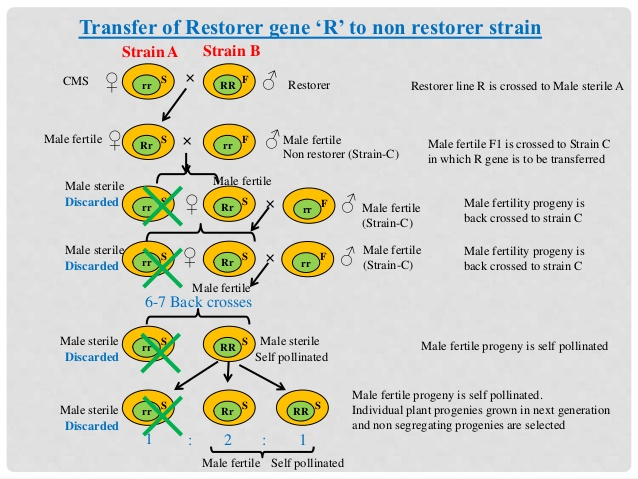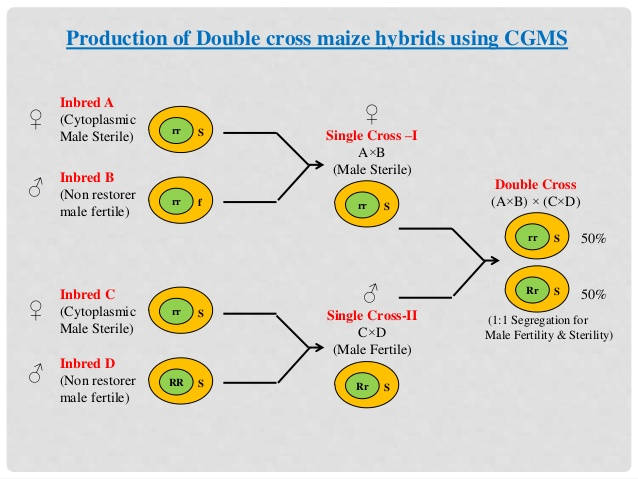The male sterility which is governed by both nuclear and cytoplasmic genes is known as Cytoplasmic Genetic Male Sterility or CGMS.
While CMS is controlled by an extra-nuclear genome, nuclear gene may have the capability to restore fertility. When nuclear restoration of fertility genes (“Rf”) is available for a CMS system in any crop, it is cytoplasmic-genetic male sterility
| N cytoplasm along with rfrf | Fertile |
|---|---|
| S cytoplasm with rfrf | Only male sterile |
Best safe and secure cloud storage with password protection
Get Envato Elements, Prime Video, Hotstar and Netflix For Free
Best Money Earning Website 100$ Day
#1 Top ranking article submission website
Another feature of these systems is that Rf mutations (i.e., mutations to rf or no fertility restoration) are frequent, so N cytoplasm with Rfrf is best for stable fertility.

Examples – It is observed in maize, sorghum, bajara, sunflower, rice and wheat.
Application of CGMS in Plant Breeding
- It is used in commercial production of hybrid seeds in maize, sorghum and bajra.

- It is widely exploited in crop plants for hybrid breeding due to the convenience of controlling sterility expression by manipulating the gene-cytoplasm combinations in any selected genotype.
- Incorporation of these systems for male sterility evades the need for emasculation in cross pollinated species thus encouraging cross breeding producing only hybrid seeds under natural conditions. This system is known in cotton, maize, jowar, sunflowe, rice and wheat etc.
Limitations of CGMS
- Undesirable effects of the cytoplasm
- Unsatisfactory fertility restoration
- Unsatisfactory pollination
- Spontaneous reversion
- Modifying genes
- Contribution of cytoplasm by male gamete
- Environmental effects
- Non availability of suitable restorer line
Advantages of CGMS
- Hybrid seed production. E.g.: maize, rice etc.
- Convenience of controlling sterility expression by manipulating the gene-cytoplasm combinations in any selected genotype.
- Facilitate cross breeding producing only hybrid seeds under natural conditions.
- Saves lot of time money and labour.
Points to know
- Also known as nucleoplasmic male sterility.
- Common in many plant species across plant kingdom.
- Male sterility determined by single recessive gene.
- There are restorer fertility gene distinct from genetic male sterility.
Best safe and secure cloud storage with password protection
Get Envato Elements, Prime Video, Hotstar and Netflix For Free
 Plantlet The Blogging Platform of Department of Botany, University of Dhaka
Plantlet The Blogging Platform of Department of Botany, University of Dhaka






hello
In the first chart how you get the dominant restorer(RR) by crossing heterozygous individual(Rr) and homozygous individual(rr)
The RR genotype came not by crossing but by self-pollination of the heterozygous individual. If you look at the right side of the chart, you’ll find a short description of every step there.